Commercial Services
For architects, developers, and contractors, North Bar Engineer offers end-to-end Commercial Engineering Services that keep your projects on schedule and within budget – with no compromise on safety or quality. You get a dedicated structural engineering team that understands the pressures of commercial builds, be it a new retail unit, an office refurbishment, or a multi-storey residential block. We provide everything from preliminary structural design consultations to detailed calculations packages ready for building control submission, working in tandem with your design and construction teams. Our agile approach means we can slot into your project at any stage, whether you need value-engineering alternatives or a last-minute check on an existing design.
Services for Commercial Clients: We design steel frames, reinforced concrete elements, masonry supports, and timber structures for commercial buildings, ensuring each element can carry the expected loads with appropriate safety margins. If you have an architect’s concept, we’ll develop the structural scheme that brings it to life – perhaps a long-span beam for a column-free space, or a moment-resisting frame to avoid intrusive bracing. Our engineers use advanced analysis software to simulate shear force and bending moment distributions, which allows us to optimize member sizes (saving material costs) while maintaining structural integrity. We also specialize in connection design, so if your steel fabricator needs specific node calculations (e.g., for a moment connection or a complex truss joint), we deliver stamped calculations that meet CE marking and Eurocode requirements.
What sets our commercial service apart is our emphasis on coordination and communication. We know delays happen when engineers and architects aren’t on the same page – that’s why we participate in design team meetings and provide prompt responses to RFIs. Our drawings are detailed and clear, often including 3D visualizations, so site teams can build right the first time. We’re also well-versed in modern building standards and trends, from the latest Building Safety Act regulations to sustainability targets like the UK’s net-zero carbon goals. When you work with North Bar Engineer on a commercial project, you gain a partner who looks out for your interests: preventing costly over-design, avoiding site issues through careful planning, and ultimately delivering a structure that stands the test of time. Your success is our success, and we go above and beyond to ensure the structural frame is one thing you don’t have to worry about.

Secondary Framing Structures (SFS Services)
Build smarter and faster with our Secondary Framing Structures (SFS) services. If you need to create non-loadbearing infill walls or even multi-storey load-bearing walls using light gauge steel, North Bar Engineer has you covered. SFS refers to lightweight, cold-formed steel stud systems – an extremely versatile solution for modern construction. Whether it’s infill panels within a concrete or steel primary frame, or an independent light gauge steel structure for a mid-rise building, we provide end-to-end engineering for SFS. Our team has specialized expertise in this area (it’s a niche many general engineers don’t focus on, but we do) – meaning you get some of the best SFS design support in the country.
What We Offer: We design SFS infill wall systems to support a variety of cladding types, ensuring they can carry wind loads and facade weights back to the main frame safely. We also engineer load-bearing SFS walls for structures where cold-formed steel is the primary load-bearing system (for example, in modular construction or multi-storey residential blocks built with steel studs).
Our service includes specifying the right stud sizes, gauges, and connections at head and base, as well as deflection criteria to keep finishes crack-free. Because SFS projects often involve coordination with facade elements, we pay special attention to details like window and door openings, masonry support, and interfaces with floor slabs. By working with North Bar Engineer, you ensure that your SFS elements integrate seamlessly with the overall building structure, avoiding the common design clashes that can occur in these systems.
Why Use SFS (and Why Use Us)? Steel framing systems are quick to install, lightweight, and very cost-effective. They allow other trades to start sooner compared to blockwork, accelerating your project timeline. Our engineers leverage these benefits by optimizing the layout and gauge of SFS studs for maximum efficiency – often reducing the number of studs or introducing smarter connections to save cost without sacrificing performance. We also incorporate robustness checks (tying in walls for stability against accidental impacts) and consider thermal and acoustic requirements, so you don’t get surprises at the building regs stage. In short, we don’t just churn out a generic SFS design; we tailor it to your project’s needs, balancing strength, speed of construction, and serviceability. With North Bar Engineer’s SFS Services, you can confidently use light gauge steel framing to its fullest potential, knowing the design is backed by rigorous calculations and practical experience.
Steel Structure Engineering
Steel is the backbone of so many great structures – and our Steel Structure Engineering service ensures your steel project is designed with precision and care. When you have a project involving structural steel, be it a single beam or an entire frame, we provide the expertise to make it stand strong. North Bar Engineer designs all types of steel structures: portal frames for warehouses, multi-storey steel frameworks for buildings, trusses and long-span roof beams, and everything in between. We handle the heavy calculations so you can have confidence that every girder, column, and connection will perform as intended, with no unexpected sagging, vibration, or deflection issues.
Our engineers are proficient in advanced steel design techniques and software. We conduct thorough analyses of shear forces, bending moments, and torsion in steel members to optimize their size. This means you often get a lighter, more cost-efficient design without compromising safety – saving on steel tonnage and fabrication costs.
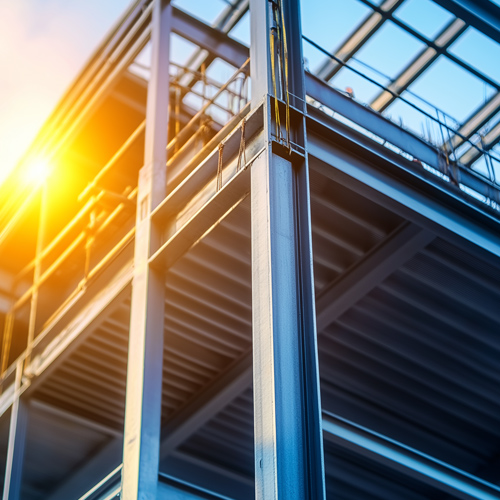
Connection Design is a critical part of our steel service: we detail how beams meet columns (bolted end plates, fin plates, moment-resisting connections, etc.) and how frames anchor to foundations. For instance, if a moment connection is needed to support a rigid frame (perhaps to avoid an unsightly brace in a building’s layout), we’ll design that moment connection and calculate the welds and bolts so it safely transmits bending forces. We’re adept with the latest codes (Eurocode 3 for steel design) and standards, ensuring that things like bolt spacing, edge distances, and plate thicknesses all meet requirements for ductility and robustness.
What does this mean for you? It means you can pursue ambitious designs – maybe you want large open interiors with minimum columns, or an architectural feature canopy in steel – and we’ll find a way to make it work structurally. We incorporate your architectural intent, often working collaboratively to adjust member placements or depths to fit the building aesthetics while maintaining structural integrity. Additionally, we address practical considerations: can this connection be fabricated and erected easily? Is there enough tolerance for field adjustments? By thinking through construction logistics, our steel designs not only look good on paper but also simplify things for the builders on site. In essence, North Bar Engineer’s Steel Structure Engineering gives you a blend of creativity and certainty – creativity to enable bold, flexible spaces, and certainty that the steel skeleton holding it all up is rock solid.
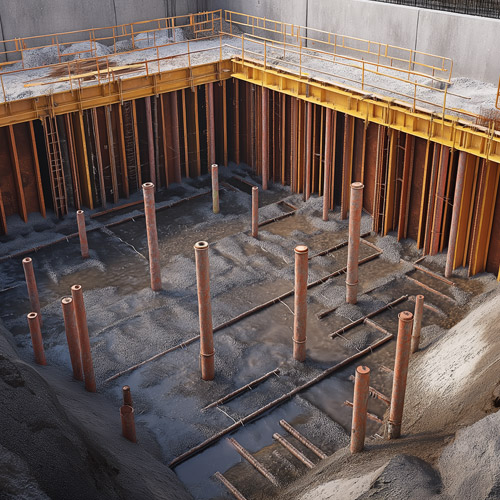
Foundation Design
Every great building starts with a great foundation – and at North Bar Engineer, we ensure your project’s foundation is up to the task. Our Foundation Design services cover everything from simple spread footings for home extensions to complex pile and raft foundations for multi-storey developments. We begin by understanding the ground beneath your site through soil reports or site investigations. With that knowledge, we calculate the loads from the structure above (the weight of walls, floors, roofs, etc.) and design foundations that safely distribute those loads to the earth. The goal is to prevent settlement or movement issues down the line, keeping your building safe and stable for decades.
For homeowners, this might mean designing a new concrete footing under a removed wall or checking if existing foundations can handle an extra storey. We handle those scenarios frequently, providing calculations and even sketches that your builder can use to dig and pour the right size footings. For larger projects, we design pad foundations, strip footings, raft slabs, or piled foundations as needed.
Perhaps your site has soft clay – we might recommend deep pile foundations to reach firmer strata, accompanied by a reinforced concrete ground beam tying the structure together. Rest assured, we always design to meet or exceed relevant codes (Eurocode 7 for geotechnical design and BS8004 for foundations) which align with building regulation requirements. If you need a basement or retaining wall, we’ll integrate that into the foundation design as well, ensuring proper reinforcement to resist earth pressures.
What You Can Expect: A foundation solution that is both economical and robust. We don’t overdesign (using unnecessarily huge footings) because we know budget matters; instead, we carefully factor in the bearing capacity of soil and optimize reinforcement. At the same time, we account for real-world construction tolerances – for instance, if you have an old property next door, we’ll design the excavation support or underpinning sequence to protect it during your build. Our calculations will be presented clearly for building control, including bearing pressure checks and settlement estimates where needed. By choosing North Bar Engineer for foundation design, you’re literally starting your project on solid ground. We give your project the footing it needs to stand safe and strong, so you can build upward with confidence.
Timber Design
Sustainable, versatile, and often visually striking – timber is a fantastic construction material, and we help you harness its full potential. Our Timber Design services cover structural elements like floor joists, roof rafters, laminated beams (glulam), timber frames, and even entire timber-framed buildings. If you love the warmth of wood or are aiming for sustainability in construction, we provide the expertise to ensure your timber structure is as safe as it is beautiful.
Designing in wood requires deep knowledge of how timber behaves. Wood is light but strong, yet it can creep (deform over time) or be susceptible to moisture and pests if not detailed correctly. North Bar Engineer’s team has significant experience with Eurocode 5 (the design code for timber structures), which means we check all the nuances – from bending and shear capacity of beams to service class (environmental conditions) factors that affect long-term performance. You might need a new timber ridge beam for a loft conversion or design a pergola or outbuilding; we’ll calculate the sizes and connections needed.
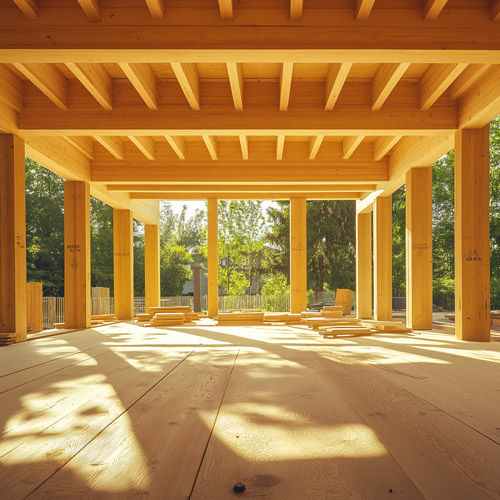
Or perhaps you’re an architect designing a modern timber pavilion – we can help detail the moment-resisting connections using flitch plates or specialty fasteners to make that possible. We also ensure any timber design we do integrates with other materials: for example, how a timber second-floor joist bears on a masonry wall or connects to a steel beam. We’ll specify metal connectors or straps (in line with UK Building Regs and NHBC standards) to tie it all together, keeping your structure safe under wind uplift or lateral loads.
Our approach is creative and precise. Timber allows for elegant, exposed structures – like feature trusses or curved glulam beams. We embrace these opportunities and often can suggest tweaks to make fabrication easier (like standardizing certain connections or using engineered timber products for better strength). If you are concerned about vibrations in a timber floor or bounce, we perform deflection and vibration checks, tuning the design (perhaps by adding a strongback or specifying a composite action with the subfloor) to give a more solid feel. Fire safety is another key aspect: we design timber elements with the needed fire resistance by accounting for charring rates, so your building stays compliant and safe. Ultimately, North Bar Engineer’s timber design service gives you the confidence to use wood in structurally ambitious ways. You get that natural aesthetic and eco-friendly benefit, backed by engineering that ensures longevity and performance. With us, your timber structures won’t just be charming – they’ll be rock-solid (or dare we say, wood-solid).
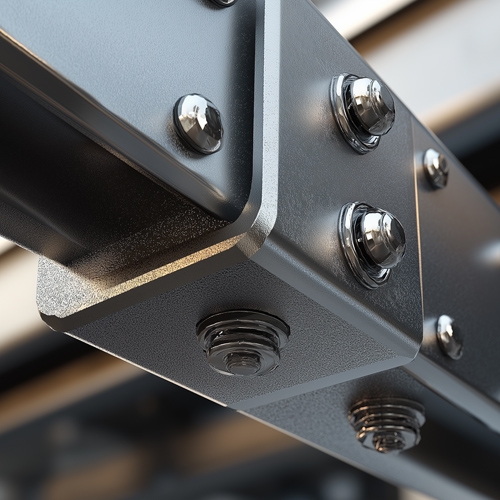
Connection Design
Behind every joint in a steel frame or timber truss lies careful engineering – and our Connection Design services make sure your project’s connections are up to the mark. A chain is only as strong as its weakest link, and similarly, a structure is only as reliable as its connections. We design the bolted, welded, and plated connections that bind your structural elements together, with an eye for both strength and simplicity. If you have a steel design done by others but need specific connections calculated (common for steel fabricators or modular builders), we step in to provide those crucial calculations.
Our expertise covers moment connections, simple shear connections, base plate design, bracing connections, and custom connections for unique geometries. For example, if a beam-column connection needs to carry a significant bending moment (perhaps in a portal frame or moment-resisting building frame), we’ll design a moment connection with endplate, flange plates, or stiffeners as required, selecting appropriate high-strength bolts to resist the forces. We’ll calculate weld sizes for shop welds and check bolt group capacities for slip or tear-out, ensuring nothing is left to guesswork.
In another scenario, suppose you have a timber beam connecting to a steel column – we can design a connection using a steel shoe or hanger, specifying the coach screws or through-bolts and checking the timber’s capacity in bearing. These details are vital for safety and are often scrutinized by building control or third-party checkers, so we prepare comprehensive documentation (calculations and diagrams) to demonstrate compliance with codes.
What’s more, we design with fabrication and erection in mind. Our connection designs strive to use standard, readily available components and to avoid overly complex welding that could slow down production. We often coordinate with fabricators’ preferences – if you have a preferred supplier or in-house shop standards, we’ll align with those so the connections are efficient to build. For existing structures, we also design remedial connections or reinforcements (for instance, adding a bracket to strengthen a historically undersized connection). You can trust that every lug, gusset, and bracket we specify is calculated to handle the real-world forces it will see, plus safety factors. At North Bar Engineer, we lock your structure together with connections that are as robust as the members themselves – giving you a complete structural solution where nothing is left to chance.
Moment Design (Lateral Stability)
Not all structures rely on brute strength alone – sometimes it’s about clever resistance to moments (bending forces) to keep a building stable. Our Moment Design service focuses on the lateral stability of your structure: we design frames and connections to resist sway, wind, and other sideways forces through bending action rather than just bracing. If you have an open-floor-plan building or large windows where wall braces or shear walls are not feasible, you likely need moment-resisting frames. North Bar Engineer ensures that these frames are engineered to hold steady when nature (or gravity) tries to make them flex.
In practical terms, this service involves configuring beams and columns into a rigid frame – calculating the bending moments and shear forces at joints when the frame is subjected to lateral loads like wind or asymmetrical loading. We then size the members and, importantly, the moment connections so that the frame acts like a continuous, sturdy loop. For example, a steel moment frame around a storefront opening must have column-beam joints that can carry the moment; we’ll design those joints (using heavy end-plate connections or welded flanges) and verify the column and beam sizes to limit drift (horizontal deflection) under wind.

This is critical for taller structures or those with slender proportions – we make sure your building won’t excessively sway, which protects cladding, partitions, and the comfort of occupants.
Our moment design also extends to reinforced concrete frames (designing beam-column monolithic connections and ensuring ductile behavior) and timber portal frames (often used in agricultural buildings or large halls). In each case, we apply the relevant codes to check that the plastic hinges (points of yield in a moment frame) form in a safe mechanism and that collapse is prevented even in extreme scenarios. For you, the client, engaging us for moment design means you can achieve wide-open spaces and large clear spans without diagonal bracing or shear walls cluttering the architecture. We give you freedom in layout – want a column-free corner with glass all around? A well-designed moment frame can allow that, and we’ll engineer it. We also pay attention to building dynamics; if moment frames are too flexible, buildings feel bouncy. By running drift and natural frequency analyses, we fine-tune the stiffness so you get a structure that feels solid. In summary, North Bar Engineer’s Moment Design service equips your project with subtle yet powerful resilience – the kind that’s invisible in the finished building but vital for its stability and performance when it counts.
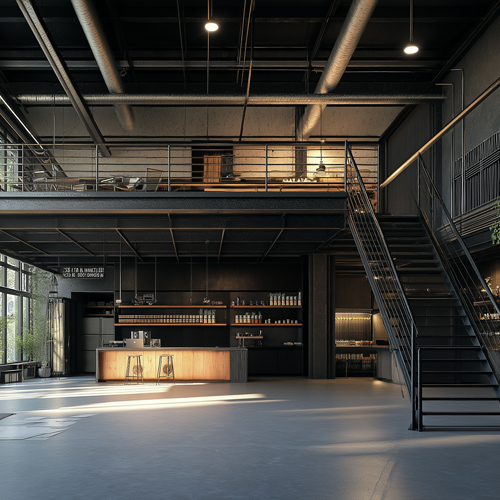
Mezzanine Floor Design
Need to add space without expanding your building’s footprint? A mezzanine floor could be the perfect solution, and we’re experts in designing them. Our Mezzanine Floor Design service helps you create that extra floor level – whether for storage in a warehouse, office space above a factory floor, or a stylish loft in a retail shop – safely and efficiently. Mezzanines introduce a new level inside an existing volume, so the key is to make them strong yet streamlined, fitting into the current building with minimal disruption.
North Bar Engineer will work with you to determine the best mezzanine structure for your needs. Typically, these are steel-framed platforms: we design the steel beams (often I-sections or channels), the columns or posts that support them, and the connection into your existing floor or building frame. We account for the intended use – is it light storage with a few people walking, or heavy pallet storage with forklifts? The loads differ hugely, and we size members accordingly. For instance, a mezzanine for an office might be designed for ~3-5 kN/m², whereas one for storage could be 10 kN/m² or more.
We also carefully check deflection limits, because a bouncy mezzanine is not only unpleasant but could crack any finishes or drywall attached. Our design will likely include a floor deck (steel decking or timber boards over the steel frame), and we’ll specify the right thickness so that you get a firm feeling floor. If needed, we’ll design a concrete slab on steel deck for very high loads.
One often overlooked aspect is how the mezzanine ties into the building for stability. We ensure it has adequate bracing or moment frames so it doesn’t sway. Sometimes, attaching the mezzanine to existing structural walls for lateral support is possible – we’ll evaluate and detail that if it helps. You will also receive designs for ancillary parts: the connections of the mezzanine beams to the existing structure, any required new foundations or slab reinforcements under the mezzanine columns, and the staircase or access if it’s part of our scope. (We coordinate closely if an architect or supplier is providing the stair, to ensure our mezzanine can accommodate it). And of course, we consider building regulations – mezzanines typically need a certain headroom and appropriate fire protection; while these are more code issues than pure engineering, we design in support for things like column fire protection enclosures or additional exits if the load is high.
By entrusting your mezzanine floor design to us, you get a fully compliant solution that maximizes utility and safety. Our design documentation will help in getting building approval by demonstrating that the mezzanine can carry the loads and is properly tied down (preventing, for example, any collapse in a fire or accidental impact). We aim to give you the most column-free mezzanine possible too, often by using longer-span beams or moment connections so that you have flexibility using the space below and above. The result? A new intermediate floor delivered with minimal fuss, giving you the space you need without the expense of a new building – all engineered to perfection by North Bar Engineer.
Staircase Design
A staircase is more than just a way to go up or down – it can be an architectural centerpiece or a tight spiral tucked in a corner. Whatever kind of stair you need, our Staircase Design service ensures it’s structurally sound, safe, and fits your space. We handle the engineering of stairs in steel, timber, or concrete, designing them to comfortably support loads and meet the necessary regulations (yes, that means no bouncy steps and the right headroom and pitch so it’s comfortable to use!).
North Bar Engineer designs domestic stairs (like for loft conversions or new internal layouts) as well as industrial and commercial stairs (such as access stairs to mezzanines, or feature staircases in office lobbies). For each staircase, we start with the architectural intent: do you want a sleek floating stair with minimal supports, or a sturdy steel stair for heavy-duty use? We then calculate the stringers (the inclined beams on either side of the stair) and the connections at top and bottom. For steel stairs, that might involve a pair of steel channels or plates as stringers – we’ll size these so they don’t deflect noticeably under the weight of several people.
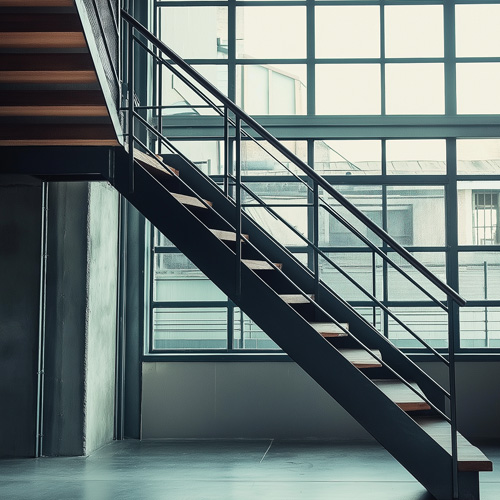
We also design the treads: if they’re metal pans with concrete infill, timber treads, or grating, each has different weight and span considerations. Our design will specify any supports needed mid-span for landings or for long flights. If you envision a “floating” stair with one stringer or with hidden supports, we love those challenges – we can design cantilevered tread supports off a central spine beam, for example, checking carefully that each connection can carry the torsion and that the wall or beam anchoring it is reinforced.
Safety is paramount. We ensure that your staircase meets the structural requirements of Building Regulations Part K and BS 5395 – meaning it can take the live loads (usually 1.5 kN per tread concentrated, or 5 kN/m² for commercial stairs) and that vibrations are kept in check. We’ll detail connections like the bolt fixings of stringers to landings or floor joists, so the installer has clear guidance. If the stair is external or a fire escape, we consider dynamic loads and robustness (many people evacuating at once, etc.). And if the design is a bit unusual (say a helical stair), we use 3D analysis to capture the behavior of the curved geometry. You can also count on us to coordinate with any balustrade/handrail designers or suppliers, because sometimes the balustrade contributes to the stair’s strength (e.g., a glass balustrade that acts as a beam). We’ll ensure that adding such features doesn’t compromise the structure – or we’ll reinforce the stair to carry the loads independently if needed.
In essence, we take your staircase from an architectural sketch to a fully engineered element that’s ready to build. The result is a stair that feels solid underfoot, aligns with your vision (no ugly support posts where you didn’t want them), and keeps everyone safe as they move between levels. With North Bar Engineer’s staircase design, you step into a world of possibilities – confident that every step, and the structure supporting it, is expertly designed.
